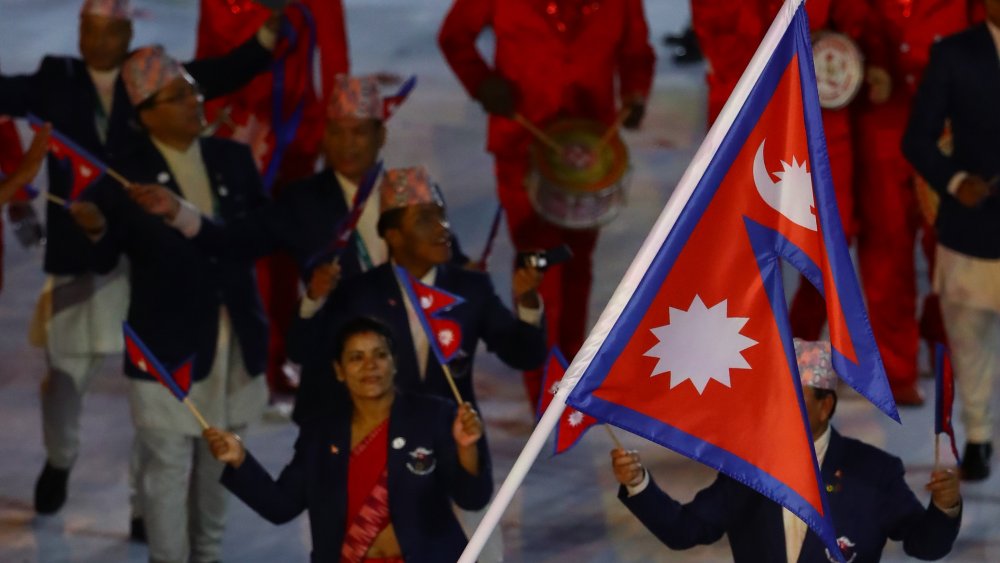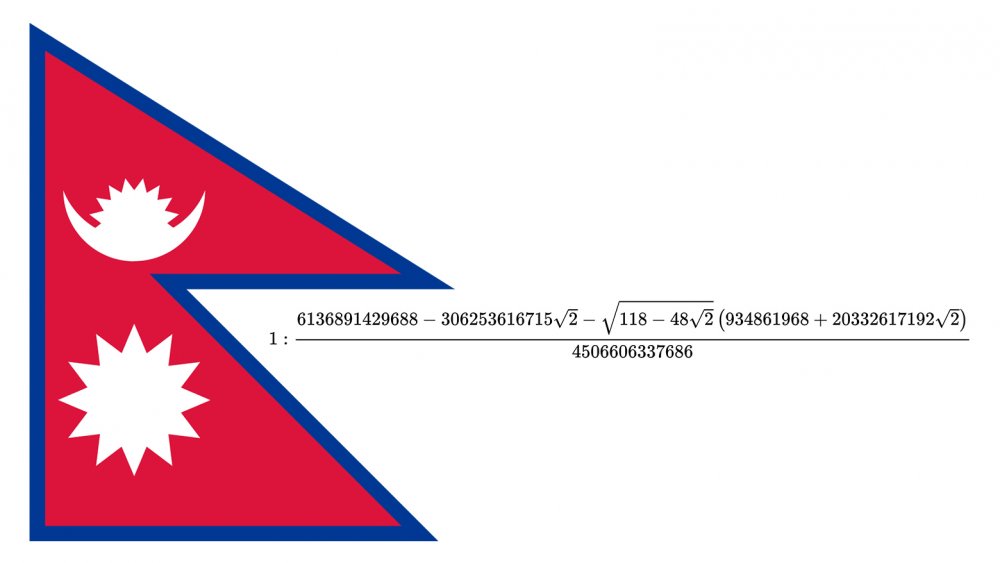Why This Is The Most Unusual Flag In The World
There are plenty of unique national flags. The Jamaican flag, per Jamaicans.com, is the only one in the world with neither red, white, nor blue in its design; it instead uses the unique combination of green, yellow, and black. Mozambique's flag, according to TravelTrivia, is the only one to feature a modern assault rifle.
But when it comes to unusual flags (Mississippi's proposed Mosquito Flag comes to mind), Nepal definitely takes the cake. While every other nation in the world has a rectangular or square flag, Nepal's flag instead follows a double-pennant design, and has done so for centuries. According to the Encyclopedia Britannica, this makes Nepal the only modern country with a non-quadrilateral flag.
Before we look at the Nepalese flag's unusual features, let's consider its more basic symbolism. The flag follows a traditional red, white, and blue color pattern; per World Atlas, the red represents bravery, while the blue border symbolizes peace and harmony. Additionally, the top of the flag features a moon design — a representation of calm and the cool climate of the Himalayas. The bottom of the flag depicts a sun, which symbolizes determination and the warm climate of the lowlands. That's all pretty standard flag stuff so far.
Nepal is the only country with a non-rectangular flag
What about the unusual two-pointed design — where did that come from? According to Public Radio International, triangular and pennant-shaped flags were fairly common throughout South Asia, even into ancient times. Nepal is not unique for having a flag of this traditional shape, but it is unique for keeping one, after European-style rectangular flags became the global standard.
While it has a very long history, the most modern version of the Nepalese flag was adopted in 1962, and as CRW Flags reports, Nepal's government provides very specific geometric instructions regarding how it must be depicted. According to CRW Flags, if you draw a rectangle around the red portion of the flag, its dimensions are a simple 3:4. But the rectangle that surrounds the entire flag has the irrational ratio of 1:1.219010337829452[...], represented by the equation above. Good luck memorizing that one, Nepalese schoolkids.
Today, the Nepalese flag's two-pennant shape is said to represent a variety of things. Per Public Radio International, the most common answer (and the one given by the Nepalese government) is that the two triangles symbolize Nepal's two major religions, Hinduism and Buddhism. But some say that they're a representation of the historic Shah and Rana dynasties that once ruled Nepal. Yet others turn their head to the side and notice that the flag's shape resembles the soaring Himalayan mountains. Perhaps that's the beauty of Nepal's flag — it leaves things open to interpretation.

